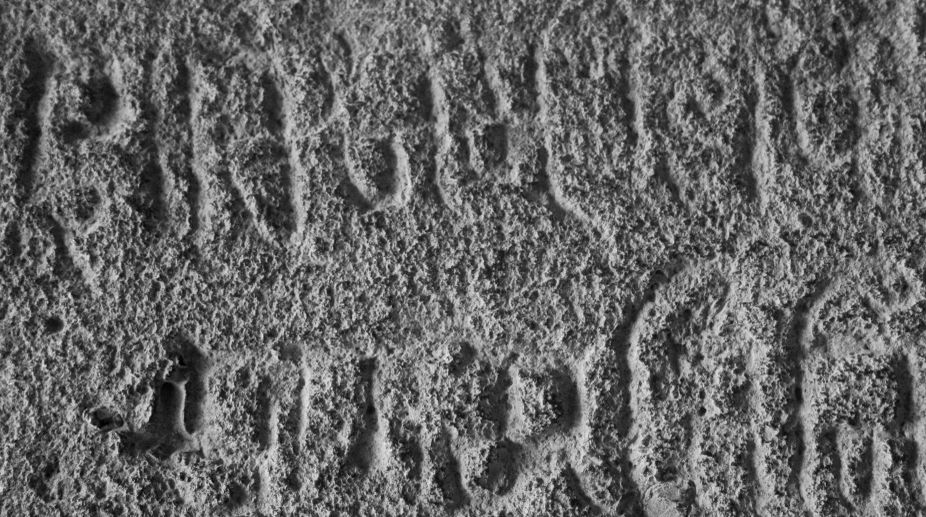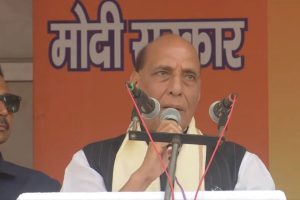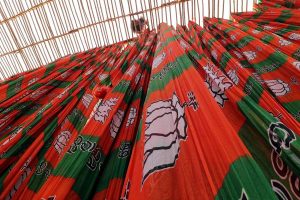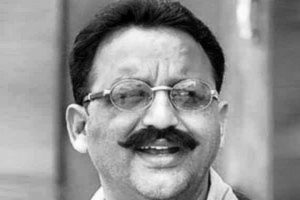The unknown British officer promptly collected samples of broken bricks and sent these to the National Test House in London.
There was no test house in Bharat then, as the Industrial Revolution had quietly bypassed this country. He was stunned at the results advanced by the Test House.
The samples were parts of regular bricks that were fired in furnaces at around 4,000 degrees Celsius. And these were around 5,000 years old.
Advertisement
Lo and behold, to the amazement of the whole world, the oldest civilization with meticulously planned urban centres stood excavated before them.
Did someone congratulate the present government on the ‘smart city’ concept? Several Ashoka pillars were standing erect for centuries all over the sub-continent, delineating the boundaries of the first welfare state in history, a federal setup as if holding up a model to follow for the present Indian state designed by independent India’s Constitution.
The pillars have priceless inscriptions engraved on them for good government and public welfare which could be the envy of a modern civilian democracy.
The pillars were widely spread out so that the populace in far corners of the empire could read and observe. And public exhortations for his Royal officials to follow and comply.
Sir James Princep, a young British civilian landed in Calcutta in the early 19th century for a job with the East India Company.
He was an ordinary civilian. As Master of the government mint, he was not mandated to chronicle the story of the Indian civilisation.
But like his other peers, he was trained in history and motivated to explore and discover his ‘adopted’ land. He was amazed to notice the ‘anonymous’ pillars with fine inscriptions scattered all over the land.
Shockingly, the ‘native’ had no clue. Obviously, history ~ even their very own ~ was no one’s concern.
Sir James learnt the language of the inscriptions ~ Bhrahmi ~ which was the lingua franca of the masses in ancient India.
The language was long dead in Bharat, and no ‘native’ contemporary of Sir James could enlighten him. He was not deterred, and deciphered the inscriptions on his own.
He discovered that the author was none other than the Great King Devanampia ~ ‘Beloved of the Gods’. But none of the pillars or rock edicts identified the Emperor or the time of his reign.
Apart from history, Sir James was trained in the classical languages, pre-eminently Greek.
He returned to London Museum, and studied contemporary records of Greek travellers and scholars during the reign of Devanampia.
He deciphered that Devanampia was King Ashoka the Great, who belonged to the Mauryan dynasty, circa 3rd century BC. By this single effort of great exertion, Sir James discovered Indian history, which was manifest all over the subcontinent, waiting to be decoded.
Recorded Indian history began with this discovery. Likewise, the paintings of Ajanta and Ellora were waiting to be discovered in the forests of Aurangabad for more than 2,000 years.
As in other parts of Bharat, countless generations of ‘natives’ just walked past our ‘past’, without venturing into the forest.
Apparently, they were too busy with their daily chores when not delving into deep questions of profound philosophy affecting humankind.
These caves were spread over a vast area, and lay uncared for and neglected for centuries.
As in other parts of Bharat, the local dynasties were too busy fighting other kingdoms, to waste their time on such mundane things as history… even if it were their own.
In the 19th century, a British Administrator was in charge of Aurangabad.
Like most of his counterparts, he was ever so ready to explore, discover and document. Incidentally, this is how history begins. He organized a ‘shoot’ in the local forest for tigers, which were legion in his area. With the approach of the hunting party, the tigers would disappear.
The Administrator was transferred but, according to standard practice, he left behind a detailed portrait of his area for the benefit of his successor.
It was another British invention. The successor was equally intrigued by the notings on the vanishing tigers.
He organized a ‘shoot’, and this time cordoned off the forest to ensure that the tigers would not simply vanish. It is then that he made another amazing discovery.
The tigers sought refuge in the deep caves of Ajanta, whose walls and ceilings were adorned with paintings of breathless beauty.
The Administrator was aghast at the centuries of neglect and indifference. The paintings were faded and the paint was peeling off. He wrote to London.
A painter was sent by ship so that each of the paintings was replicated and shipped to London Museum, to be kept as a permanent record.
Only thereafter were the paintings cleaned and restored. There are few instances of such dedicated and thoughtful action among the several hundred British administrators who ruled India with distinction in their adopted ‘home away from home’.
Thanks entirely to the efforts of the anonymous civil servant, the site has been declared a heritage site by UNESCO.
These are just a few instances of the pioneering work done by largely anonymous British civilians.
There are hundreds of such examples all over the sub-continent where these administrators virtually discovered our rich civilization for us, ranging from the translation of Chanakya’s Arthashastra to compiling the first dictionary of Sanskrit, and the study of ‘Flora and Fauna’ of India.
The advent of the British transformed a largely undiscovered Bharat into an India that is today justifiably proud of its unique civilisational heritage.
The writer is a retired IAS officer.
Advertisement











